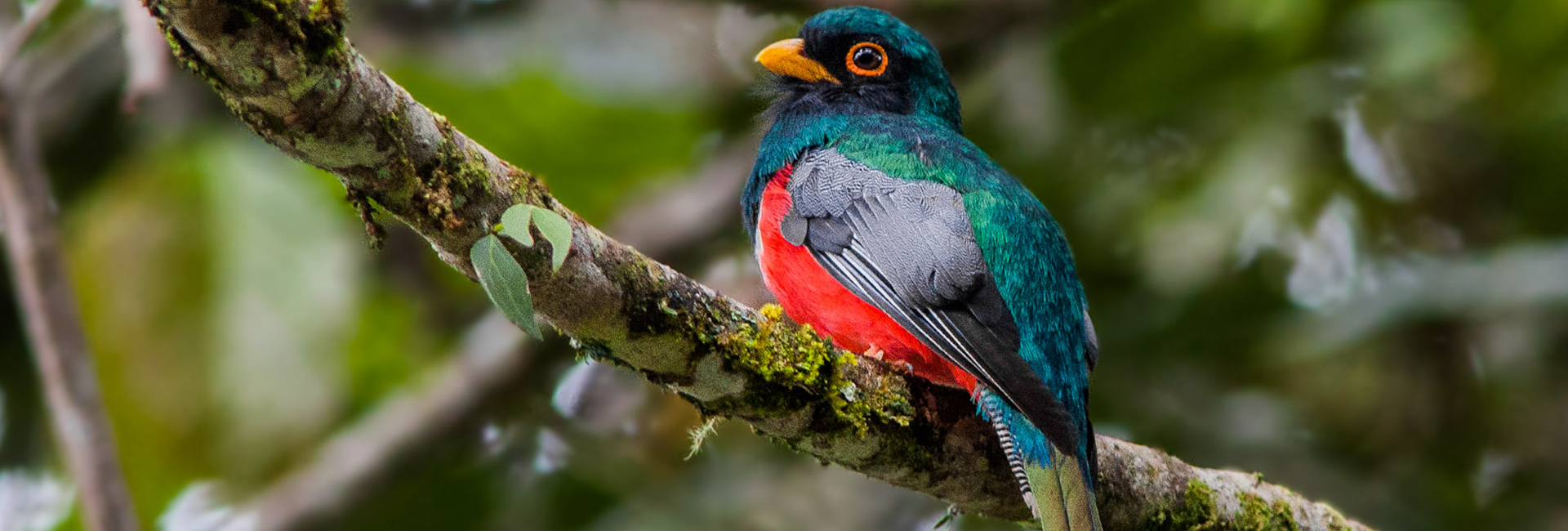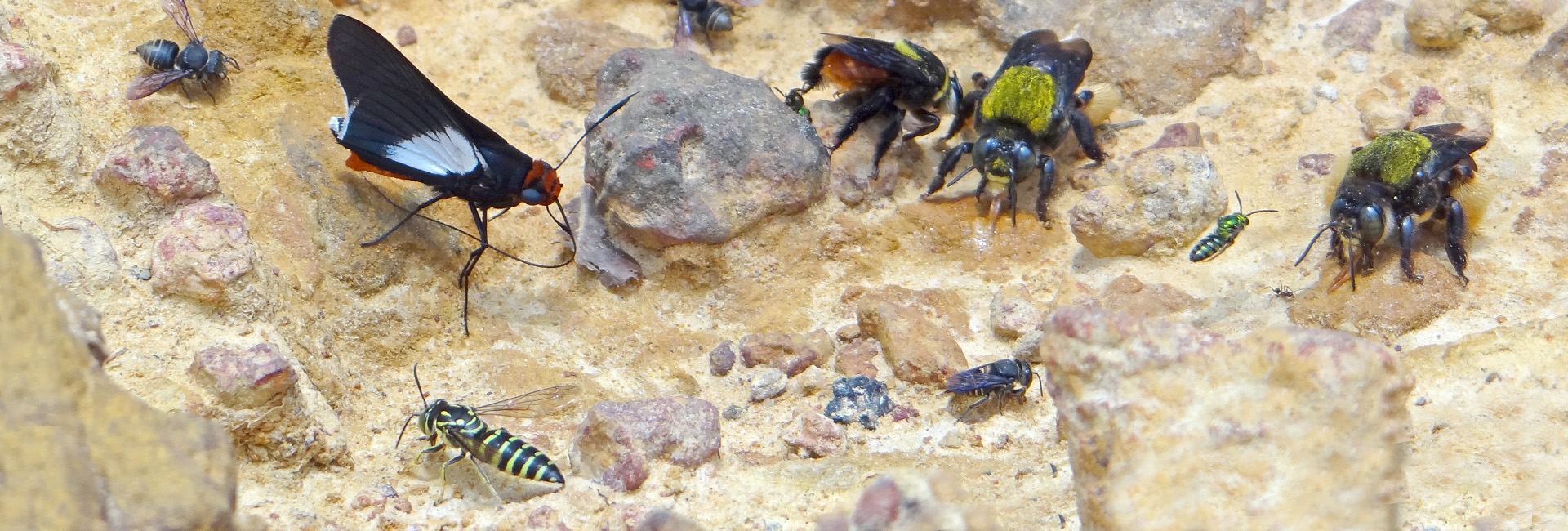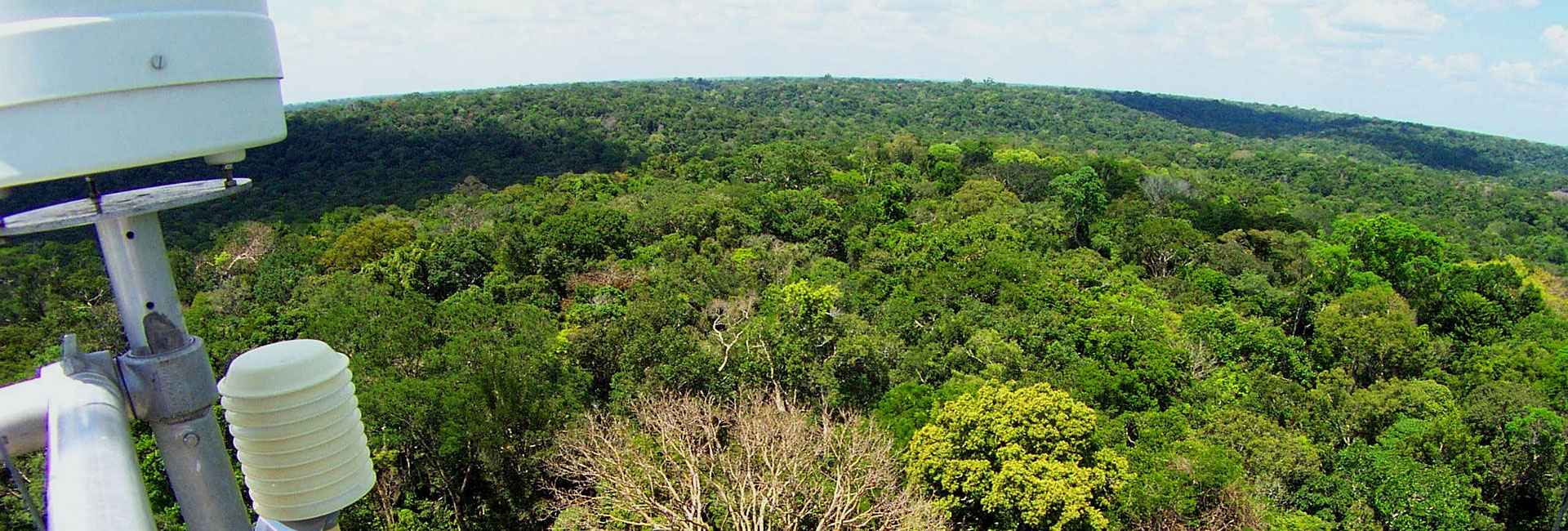Guess who comes for dinner: other vertebrates in harpy eagle nests
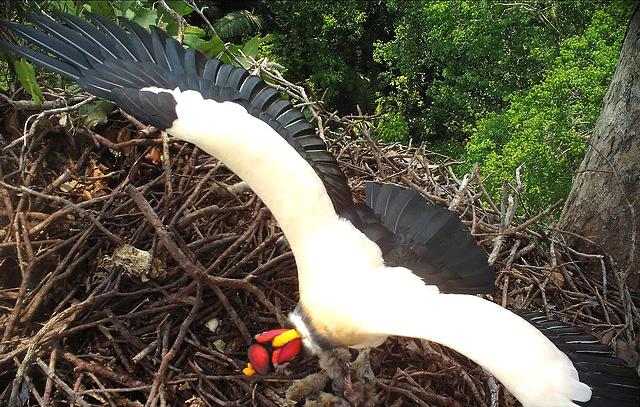 Camera traps recorded several arboreal vertebrate species in or near harpy eagle (Harpia harpyja) nests in commensalistic and even aggressive interactions. The findings are part of the doctoral thesis in Ecology of Helena Aguiar-Silva on resource use by harpy eagles, and have recently been published in the Journal of Raptor Research.
Camera traps recorded several arboreal vertebrate species in or near harpy eagle (Harpia harpyja) nests in commensalistic and even aggressive interactions. The findings are part of the doctoral thesis in Ecology of Helena Aguiar-Silva on resource use by harpy eagles, and have recently been published in the Journal of Raptor Research.
Harpy eagles are the largest and most powerful raptors in neotropical rainforests, and are among the largest eagles in the world. They are top predators and inhabit the canopy layer, where they construct their nests on emergent trees.
The large nest structures favor the accumulation of decomposed organic matter of prey remains and leaves, and the growth of epiphytic species, forming a microhabitat suitable for many invertebrate species. These resources can be attractive to other animals.
Ten harpy eagle nests (nine in terra firme forests, and one in an area of savanna) were continuously monitored by motion-triggered camera-traps for periods of 16 to 692 days from 2012 to 2016. The nests were at heights of 14 to 34 m above ground, and the cameras were mounted some 5 m above the nest, to minimize disturbance of the eagles' routine.
Monitoring occurred during all nesting phases of the eagles, from nest-building, courtship, egg-laying and incubation to the nestling, fledgling and postfledgling stages.
Overall 27 vertebrate species were recorded in or near six of the nests, most of them only one or two times.
Small birds (six passerine species) mostly perched or foraged on nearby branches. Among 15 species of larger birds, most records were of individuals foraging or scavenging on the nest, including other raptors and vultures.
Six species of mammals were also observed, all foraging in or around the nest: Southern tamandua (Tamandua tetradactyla), tayra (Eira barbara), kinkajou (Potos flavus), Western wooly opossum (Caluromys lanatus) and two species of capuchin monkey (Sapajus cay and S. apella).
Ten of the 20 larger species observed in or around the nests have already been recorded as harpy eagle prey.
No visitors predated harpy eagle eggs or nestlings, despite the fact that some of them were also predators. No species visited the nest during the incubation or nestling stages, when the risk of being attacked must have been very high, since harpy eagles can be very aggressive.
Apart from nine events of courtship activity by ornate hawk-eagles (Spizaetus ornatus) at one of the terra-firme forest nests, the most frequent visitors were the Southern tamandua (12 events) and tayra (6 events), always foraging in or around the savanna nest. This nest was the lowest lying, at 14 m, which may be related to the higher frequency of visits it received.
Three direct encounters between harpy eagles and visitors were recorded in the savanna nest. In one case, a tayra climbed the tree while an eagle pair was in courtship on the nest, and was aggressive toward both adults until they left (see image). On two other occasions a hooded capuchin (Sapajus cay) visited the nest. On the second occasion, the individual was killed by one of the eagles while searching for food in a branch hole. The monkey appeared to be a juvenile, and its lack of experience likely made it more vulnerable to predation risk.
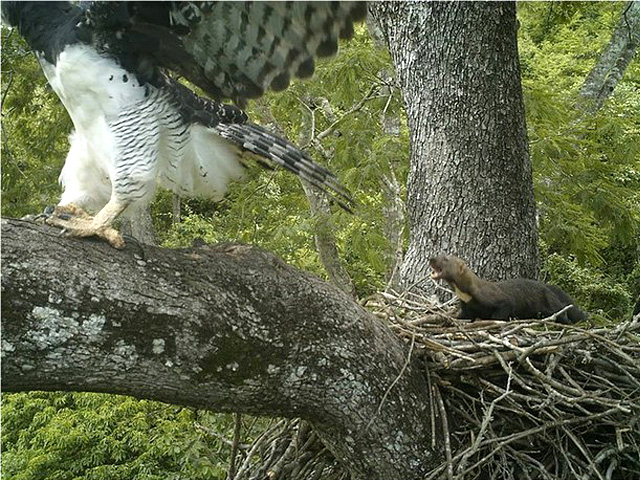 The study provided the first documented evidence of commensalism at a harpy eagle nest by a greater yellowheaded vulture (Cathartes melambrotus) and a king vulture (Sarcoramphus papa) (see image), which scavenged the remains of prey in two different forest nests.
The study provided the first documented evidence of commensalism at a harpy eagle nest by a greater yellowheaded vulture (Cathartes melambrotus) and a king vulture (Sarcoramphus papa) (see image), which scavenged the remains of prey in two different forest nests.
The authors modeled visitor predation risk at nests based on visiting frequency and the species abundance in the region. The tamandua and hooded capuchin monkey experienced the greatest risk of predation after deciding to climb an eagle nest searching for food, suggesting that risk was most intense for species that were most abundant.
The recorded multispecies usage of harpy eagle nests suggests a complex web of interspecific interactions centered on the microhabitat created by the nests. The mostly visited nest being in savanna areas where fragmentation creates patchy resource distribution suggests that this large predator may also function as an ecosystem engineer.
The doctoral project of Ms. Aguiar-Silva in INPA's graduate program in Ecology was supervised by Tânia Sanaiotti and Ana Albernaz.
The headline image shows a king vulture (Sarcoramphus papa) scavenging on the carcass of a three-toed sloth (Bradypus tridactylus) brought by one of the adult harpy eagles to a fledgling. The other image shows a tayra (Eira barbara) agressively confronting a harpy eagle pair in courtship. The eagles left the nest, but the tayra withdrew shortly after. The imagens are from camera-traps of the Harpy Eagle Project.



